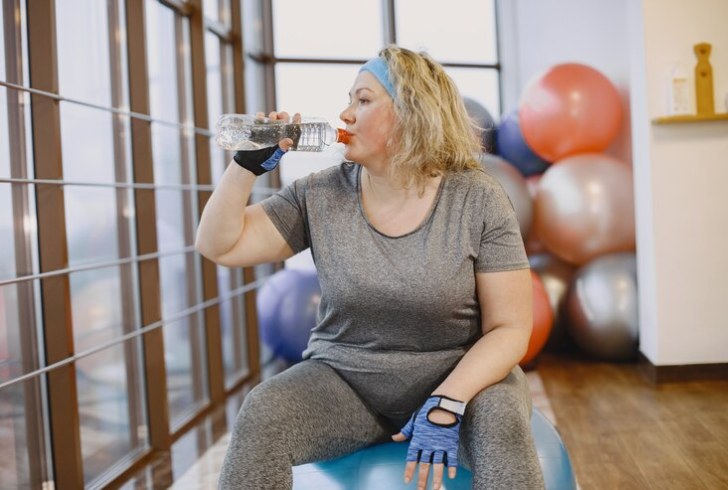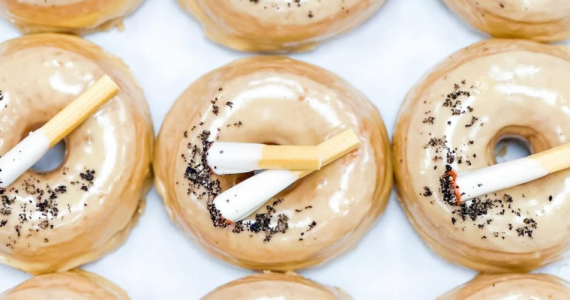Experiencing a swollen face in the morning is often harmless. However, persistent puffiness can lead many to search for answers on how to slim down their face quickly. While targeting fat loss in a specific area isn’t possible, there are effective ways to reduce facial puffiness and achieve overall weight loss. Following these practical tips can help promote a slimmer and healthier appearance.
Why Does the Face Appear Fuller?
The appearance of a fuller face depends on several factors. Genetics play a significant role, with overall body fat percentage directly impacting facial fullness, explains Albert Matheny, RD, CSCS, co-founder of SoHo Strength Lab. High sodium or alcohol consumption, certain medications, or water retention can also contribute to puffiness.
Nutritionist Jessica Cording, RD, notes that after indulging in salty snacks or alcoholic beverages, puffiness is often temporary and typically subsides within a day. Simple remedies like facial massages or ice rollers can help reduce swelling more quickly.
1. Track Calorie Intake

Creating a calorie deficit is key to weight loss. Burning more calories than consumed helps reduce overall body fat, including in the face. Keri Gans, RD, author of The Small Change Diet, highlights the usefulness of calorie tracking tools to boost awareness of food intake. Resources like the NIH’s Body Weight Planner can provide personalized calorie recommendations based on factors like age, activity level, and goals.
2. Review Medications
Certain medications, such as corticosteroids or ACE inhibitors, can cause facial swelling as a side effect. Gans advises discussing concerns with a healthcare provider if medication seems to impact appearance. While an alternative may not always be available, it’s worth exploring solutions with a doctor.
3. Increase Fiber Consumption
Fiber plays a vital role in weight management. Found in fruits, vegetables, and whole grains, fiber helps curb hunger and prevents overeating. Foods like oats, legumes, and leafy greens improve digestion, reducing bloating and puffiness. Additionally, fiber supports blood sugar regulation and nourishes gut bacteria, further aiding overall health.
4. Rethink Exercise Routines
Regular exercise burns calories and promotes fat loss, helping reduce facial fullness. Incorporating at least 150 minutes of moderate-intensity exercise each week is a good starting point, says Matheny. Strength training and high-intensity interval training (HIIT) also boost metabolism and improve body composition, making these exercises particularly effective.
A study published in the Journal of Diabetes Research found that women participating in HIIT programs achieved similar fitness results in less time compared to traditional workouts, making it a practical choice for busy individuals.
5. Reduce Sodium Intake
High sodium levels cause water retention, leading to bloating and a swollen face. Limiting sodium to 2,300 milligrams daily, as recommended by the Dietary Guidelines for Americans, can help manage fluid balance. Choosing fresh ingredients over processed foods significantly reduces sodium consumption.
6. Stay Hydrated

Adequate water intake prevents dehydration and helps the body maintain proper fluid balance. Dehydration often leads to water retention and swelling, explains Cording. Drinking water regularly also reduces the likelihood of mistaking thirst for hunger, which prevents unnecessary snacking.
An easy way to check hydration levels is by monitoring urine color—it should appear pale yellow. Staying hydrated not only reduces puffiness but also supports overall health.
7. Get Sufficient Sleep
Sleep impacts many aspects of health, including weight management and facial appearance. Poor sleep disrupts hunger hormones like ghrelin, increasing the risk of overeating. The CDC recommends adults aim for at least seven hours of sleep each night. A consistent sleep schedule promotes better eating habits and helps minimize puffiness caused by fatigue.
8. Limit Alcohol Consumption
Alcohol is calorie-dense and often leads to dehydration, contributing to facial swelling. Cording explains that alcoholic beverages take priority in the liver’s metabolic process, delaying fat burning. Limiting alcohol intake can reduce puffiness and improve overall appearance.
The Dietary Guidelines for Americans suggest limiting alcohol to one drink per day for women and two for men. Reducing alcohol intake benefits hydration levels and supports long-term health.
9. Manage Stress Levels
Chronic stress impacts hormone levels, increasing cortisol, which can contribute to weight gain and puffiness. Reducing stress through meditation, yoga, or breathing exercises helps regulate cortisol levels. Even a simple activity like walking can lower stress and support overall well-being, notes Matheny.
10. Focus on Balanced Nutrition

A balanced diet plays a key role in achieving and maintaining a healthy weight. Gans recommends incorporating whole grains, fruits, vegetables, nuts, and legumes into meals. Filling half the plate with vegetables during meals is an effective way to boost nutrient intake.
Avoiding processed foods reduces excess sodium, sugars, and unhealthy fats that contribute to weight gain. Cooking at home gives greater control over ingredients, making it easier to adopt healthier eating habits.
Practical Lifestyle Adjustments for Long-Term Results
Achieving a slimmer face involves adopting a combination of healthy habits. From increasing fiber intake to managing stress, small changes can make a significant impact over time. By focusing on overall health and well-being, reducing facial puffiness and achieving weight loss becomes more sustainable.




